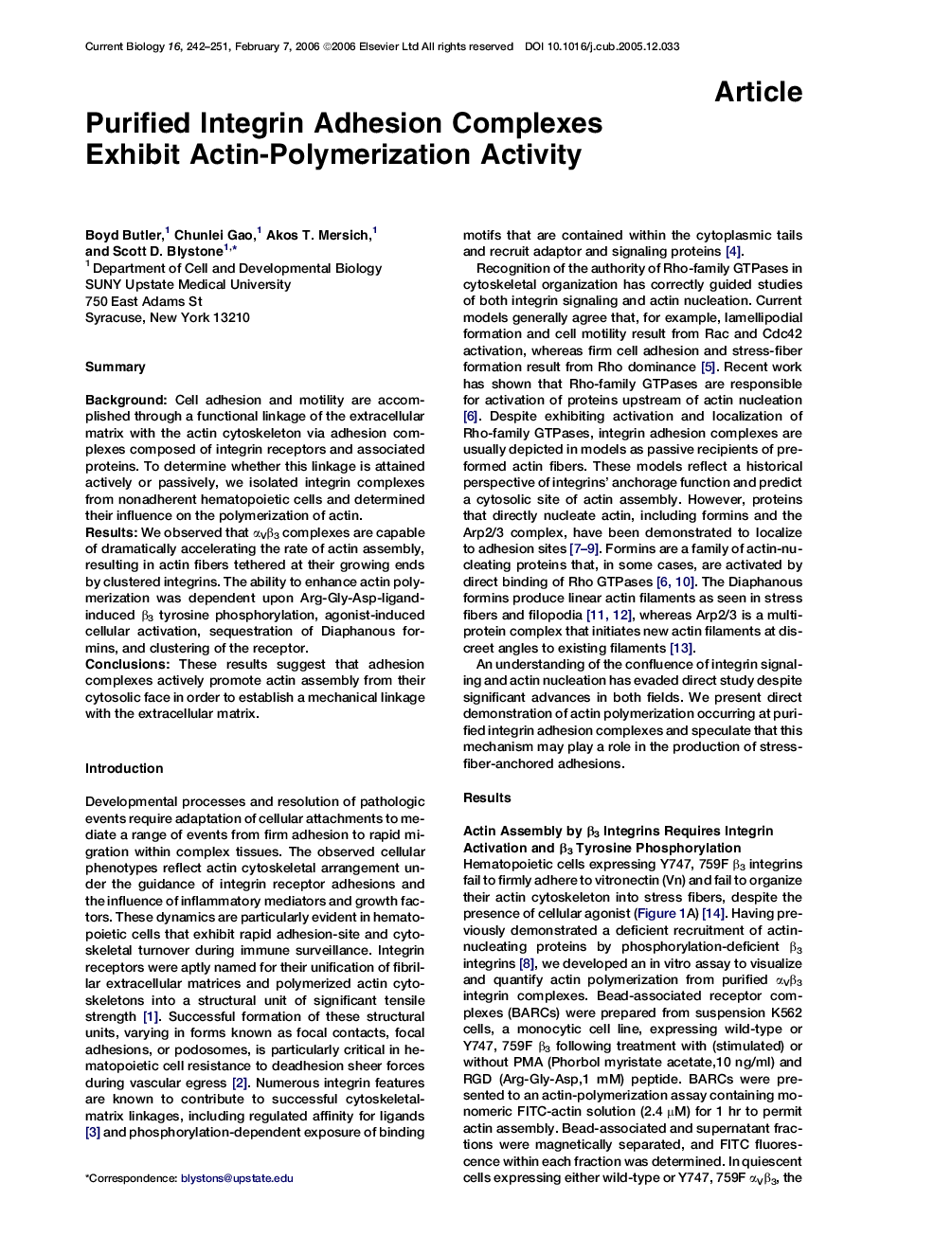| Article ID | Journal | Published Year | Pages | File Type |
|---|---|---|---|---|
| 2044616 | Current Biology | 2006 | 10 Pages |
SummaryBackgroundCell adhesion and motility are accomplished through a functional linkage of the extracellular matrix with the actin cytoskeleton via adhesion complexes composed of integrin receptors and associated proteins. To determine whether this linkage is attained actively or passively, we isolated integrin complexes from nonadherent hematopoietic cells and determined their influence on the polymerization of actin.ResultsWe observed that αVβ3 complexes are capable of dramatically accelerating the rate of actin assembly, resulting in actin fibers tethered at their growing ends by clustered integrins. The ability to enhance actin polymerization was dependent upon Arg-Gly-Asp-ligand-induced β3 tyrosine phosphorylation, agonist-induced cellular activation, sequestration of Diaphanous formins, and clustering of the receptor.ConclusionsThese results suggest that adhesion complexes actively promote actin assembly from their cytosolic face in order to establish a mechanical linkage with the extracellular matrix.
